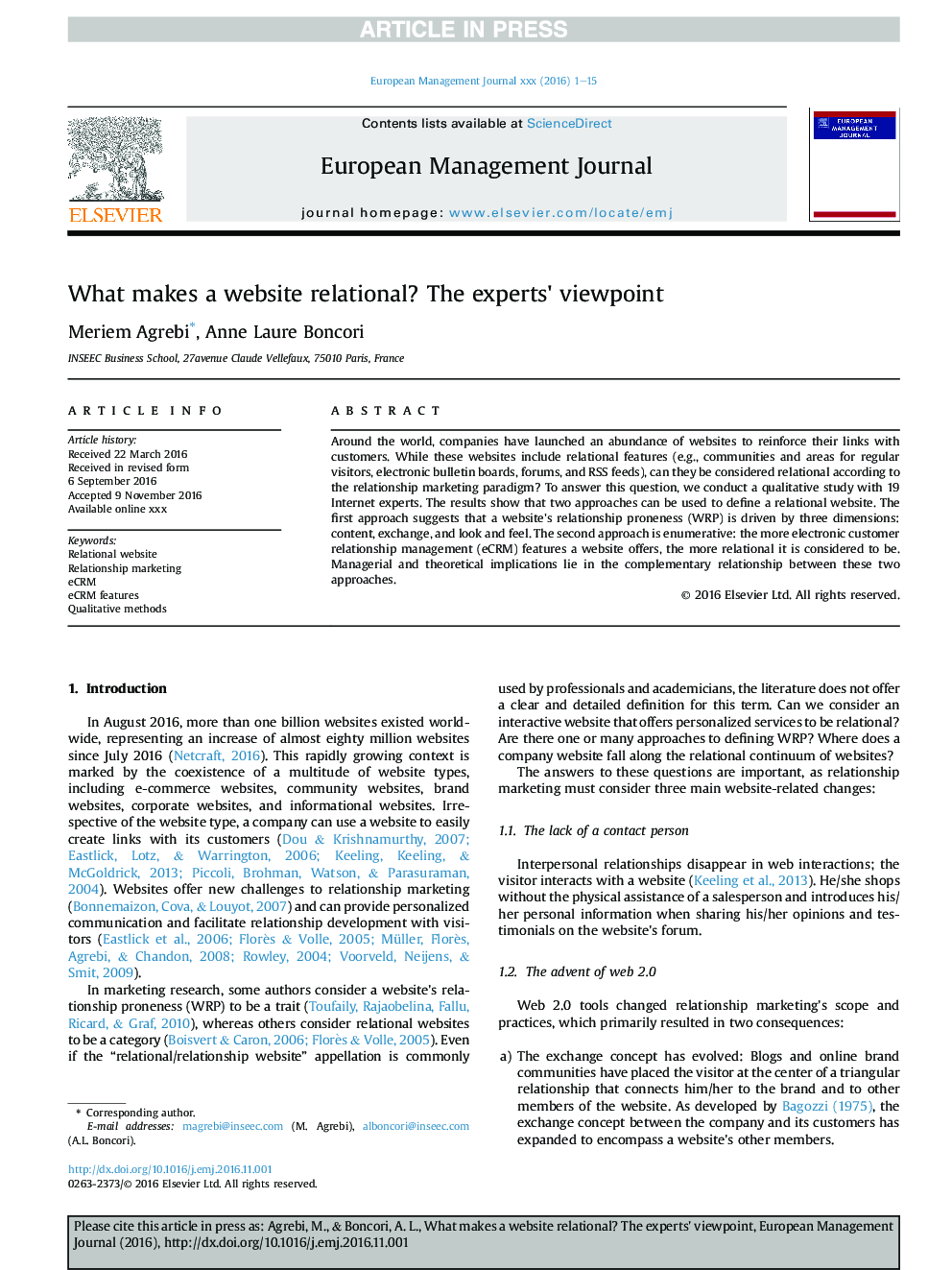| Article ID | Journal | Published Year | Pages | File Type |
|---|---|---|---|---|
| 5108940 | European Management Journal | 2017 | 15 Pages |
Abstract
Around the world, companies have launched an abundance of websites to reinforce their links with customers. While these websites include relational features (e.g., communities and areas for regular visitors, electronic bulletin boards, forums, and RSS feeds), can they be considered relational according to the relationship marketing paradigm? To answer this question, we conduct a qualitative study with 19 Internet experts. The results show that two approaches can be used to define a relational website. The first approach suggests that a website's relationship proneness (WRP) is driven by three dimensions: content, exchange, and look and feel. The second approach is enumerative: the more electronic customer relationship management (eCRM) features a website offers, the more relational it is considered to be. Managerial and theoretical implications lie in the complementary relationship between these two approaches.
Related Topics
Social Sciences and Humanities
Business, Management and Accounting
Business and International Management
Authors
Meriem Agrebi, Anne Laure Boncori,
